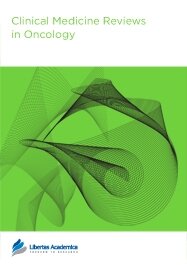

The Role of Plerixafor in the Management of Non-Hodgkin’s Lymphoma and Hematopoietic Stem Cell Transplantation
Publication Date: 03 May 2011
Type: Review
Journal: Clinical Medicine Reviews in Oncology
Citation: Clinical Medicine Reviews in Oncology 2011:3
doi: 10.4137/CMRO.S3235

Autologous hematopoietic stem cell transplantation (HSCT) is an established treatment for relapsed chemotherapy sensitive non-Hodgkin’s lymphoma (NHL) and an important component of anti-myeloma therapy. Recovery of bone marrow function after autologous HSCT is dependant on the dose of infused hematopoietic stem cells (HSCs) after bone marrow ablation. Despite the use of chemotherapy and granulocyte colony-stimulating factor (G-CSF) based mobilization regimens, some patients are unable to mobilize adequate numbers of CD34+ HSCs and cannot undergo potentially lifesaving autologous HSCT. Plerixafor (AMD3100 or Mozobil) is a newly licensed drug which is used with G-CSF to mobilize CD34+ HSCs for autologous HSCT, reducing apheresis requirements, and the rate of primary mobilization failure. Plerixafor and G-CSF “rescue” protocols allow the successful mobilization of HSCs in patients that have failed standard G-CSF based mobilization protocols. Hematopoietic stem cell biology and the use of Plerixafor in the management of NHL are reviewed.
RIS citation (ENDNOTE, REFERENCE MANAGER, PROCITE, REFWORKS)
BibTex citation (BIBDESK, LATEX)

The process of submitting the paper was smooth with little time required on the author's behalf. Reviews were prompt and the process of addressing reviewer comments was very streamlined. All correspondence with the editorial office was extremely professional with immediate responses. This is one of the few journals asking for feedback on their submission process.
Facebook Google+ Twitter
Pinterest Tumblr YouTube